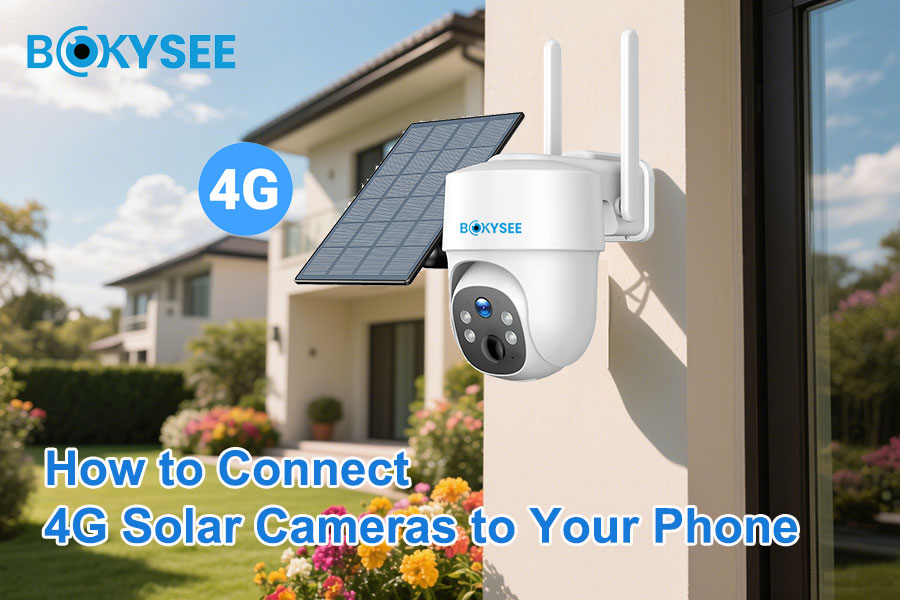¿Qué es el chipset CCTV?

Chipset de CCTV: Es el componente principal de un sistema de CCTV que procesa las señales de video de las cámaras de vigilancia, lo que permite la transmisión y el almacenamiento de imágenes de alta calidad. Componentes y características de un chipset de CCTV: Incluye el procesador, que ejecuta instrucciones y realiza cálculos. También incluye memoria para almacenar datos importantes, un codificador/decodificador de video para convertir las señales de video y diversas interfaces de entrada/salida para conectar cámaras, monitores y dispositivos de almacenamiento. Evaluación de los requisitos del proyecto: Determine la escala de su sistema, la resolución y la calidad de imagen deseadas, si necesita análisis de video avanzados, y los requisitos de almacenamiento y ancho de banda. Al evaluar sus necesidades específicas, puede elegir el chipset adecuado para satisfacer sus objetivos de vigilancia y garantizar un rendimiento óptimo.
Diferentes soluciones de chipsets para CCTV

Fuente de Unsplash
Cuando se trata de chipsets CCTV, hay dos tipos principales: analógicos e IP.
Los chipsets analógicos convierten la señal analógica de la cámara en digital para su transmisión y grabación. Son compatibles con la infraestructura analógica existente y más asequibles. Sin embargo, ofrecen menor calidad de imagen, escalabilidad limitada y podrían no integrarse bien con otros sistemas.
Los chipsets IP utilizan tecnología digital para la transmisión y grabación de vídeo. Ofrecen una calidad de imagen superior, mayor escalabilidad y flexibilidad. Se integran fácilmente con otros sistemas de seguridad y ofrecen funciones avanzadas como la activación de alarmas o el envío de notificaciones.
Por lo tanto, al elegir un chipset CCTV, considere si la compatibilidad y el costo son importantes (en cuyo caso los chipsets analógicos pueden ser adecuados) o si la calidad de la imagen, la escalabilidad y las capacidades de integración son más importantes (en cuyo caso los chipsets IP son la opción correcta).
Cómo elegir la solución de chipset adecuada
Al elegir una solución de chipset para su proyecto de CCTV, considere la calidad de imagen y los requisitos de resolución. Determine si necesita definición estándar, alta definición (HD), Full HD o incluso resolución 4K.
Evalúe las capacidades de diferentes sensores y lentes de imagen para comprender su impacto en la calidad de la imagen. Evalúe el rendimiento en condiciones de poca luz, la luminosidad y la capacidad infrarroja (IR) para visión nocturna.
Considere la tecnología de compresión de video. Compare los códecs H.264 y H.265; H.265 ofrece una mejor compresión y reduce los requisitos de ancho de banda y almacenamiento.
Analice los requisitos de su red y decida qué conectividad es más adecuada: cableada o inalámbrica. Considere la opción de alimentación por Ethernet (PoE) si opta por la conectividad cableada.
Explora funciones inteligentes y análisis para mayor funcionalidad. Busca funciones avanzadas de vigilancia, detección facial, seguimiento de objetos y detección de movimiento.
Evalúe la reputación, el soporte y las opciones de garantía del fabricante. Investigue su trayectoria y lea las opiniones de los clientes para garantizar la fiabilidad y la calidad del producto. El soporte técnico debe estar disponible en caso de cualquier problema.
Tener en cuenta estos factores le ayudará a elegir la solución de chipset adecuada para su proyecto de CCTV.
Soluciones de chipsets CCTV populares en el mercado
En cuanto a soluciones de chipsets para CCTV, existen varias opciones populares en el mercado. Analicemos algunos fabricantes líderes y sus chipsets destacados:
– SONY:
Sony es una marca consolidada, reconocida por su contribución al mercado de chipsets para CCTV. Sus chipsets de la serie Exmor, como los modelos Exmor R y Exmor RS, gozan de gran reconocimiento por su excepcional rendimiento en condiciones de poca luz y su alto rango dinámico. Estos chipsets ofrecen una excelente calidad de imagen, reducción de ruido y algoritmos avanzados de procesamiento de señal.
– FH (Hisilicon):
FH, filial de Huawei, es un destacado fabricante de chipsets en el sector de la seguridad. Sus chipsets de las series Kirin y HiSilicon se utilizan ampliamente en aplicaciones de vigilancia. Conocidos por su potente capacidad de codificación de vídeo, bajo consumo de energía y compatibilidad con funciones avanzadas como análisis de vídeo e IA, los chipsets FH proporcionan una mayor precisión en la detección de movimiento y el reconocimiento de objetos.
– Ingénico:
Ingenic es una empresa emergente en el mercado de chipsets para CCTV, que ofrece un equilibrio entre rendimiento y precio asequible. Sus chipsets de las series M30 y T30 demuestran una excelente codificación de vídeo y compatibilidad con diversos sensores de imagen. Los chipsets de Ingenic suelen ofrecer soluciones rentables sin comprometer la calidad ni la fiabilidad del vídeo.
– XM (Nextchip):
Los chipsets XM, fabricados por Nextchip, han ganado popularidad gracias a su rentabilidad y robusto rendimiento. Estos chipsets se utilizan comúnmente en cámaras CCTV de gama básica y media. Los chipsets XM destacan por su procesamiento de vídeo en tiempo real, algoritmos de compresión eficientes y compatibilidad con diversas funciones como análisis de vídeo, estabilización de vídeo y detección de movimiento.
Al comparar estas populares soluciones de chipsets para CCTV, es importante considerar factores como la calidad de imagen, el rendimiento en condiciones de poca luz, la capacidad de procesamiento de video, el consumo de energía y la compatibilidad con funciones avanzadas como IA y análisis de video. Evaluar los requisitos y prioridades de su proyecto le ayudará a tomar una decisión informada sobre la solución de chipset más adecuada para sus necesidades.
Cómo elegir un sistema de cámaras de seguridad para su negocio?

Al seleccionar un sistema de cámaras de seguridad para su negocio, hay dos factores importantes a considerar.
Primero, debe identificar las necesidades específicas de seguridad de su empresa. Esto incluye determinar qué áreas de su negocio deben ser monitoreadas, como entradas, estacionamientos o espacios de trabajo sensibles. También debe considerar si necesita cámaras para capturar imágenes de alta resolución con fines de identificación, si necesita que funcionen en condiciones de poca luz y si se requieren capacidades de audio para grabar conversaciones.
El segundo factor a considerar es la integración de los chipsets de CCTV con otros componentes de seguridad. Un sistema de seguridad integral requiere la integración de diferentes elementos de seguridad, como sistemas de control de acceso y alarmas. Al elegir un chipset de CCTV, asegúrese de que sea compatible con su infraestructura de seguridad existente. Esta integración permite un enfoque unificado de la seguridad, facilitando una comunicación fluida entre los diferentes componentes.
Al evaluar sus necesidades de seguridad y considerar la integración de chipsets de CCTV con otros componentes de seguridad, podrá diseñar un sistema de cámaras de seguridad eficaz y eficiente para su negocio. Esto le ayudará a proteger sus activos y a crear un entorno seguro para su personal y clientes.

Cámaras analógicas vs. cámaras IP

Al decidir por una solución de chipset CCTV, encontrará dos opciones: cámaras analógicas y cámaras IP.
Las cámaras analógicas son asequibles y fáciles de usar, ya que convierten las imágenes en señales analógicas que se transmiten mediante cables coaxiales. Por otro lado, las cámaras IP ofrecen funciones avanzadas y se conectan directamente a una red IP. Permiten el acceso remoto, tienen resoluciones más altas y ofrecen análisis de video e integración con otros dispositivos.
Los factores a considerar para elegir entre ambos incluyen el costo, la calidad de imagen, la flexibilidad y escalabilidad, la infraestructura de red y las funciones adicionales. Las cámaras analógicas son rentables inicialmente, pero las cámaras IP pueden requerir equipos de red y almacenamiento adicionales. Las cámaras IP ofrecen una calidad de imagen superior con resoluciones más altas. Además, ofrecen mayor flexibilidad y escalabilidad, lo que facilita la expansión y la monitorización remota. Considere su infraestructura de red actual y la necesidad de integración y funciones avanzadas.
En definitiva, la elección entre cámaras IP analógicas y POE depende de los requisitos específicos de su proyecto, su presupuesto y sus objetivos a largo plazo. Analice estos factores para determinar qué solución de chipset CCTV se adapta mejor a sus necesidades.
Conclusión:
En conclusión, elegir una solución de chipset para CCTV requiere una investigación y evaluación exhaustivas. Considere la calidad de imagen, la potencia de procesamiento y la compatibilidad para tomar una decisión informada que se ajuste a los requisitos específicos de su proyecto. Evite las prisas y priorice un conocimiento completo de cada opción de chipset para garantizar un rendimiento óptimo y adaptarse al crecimiento futuro.







